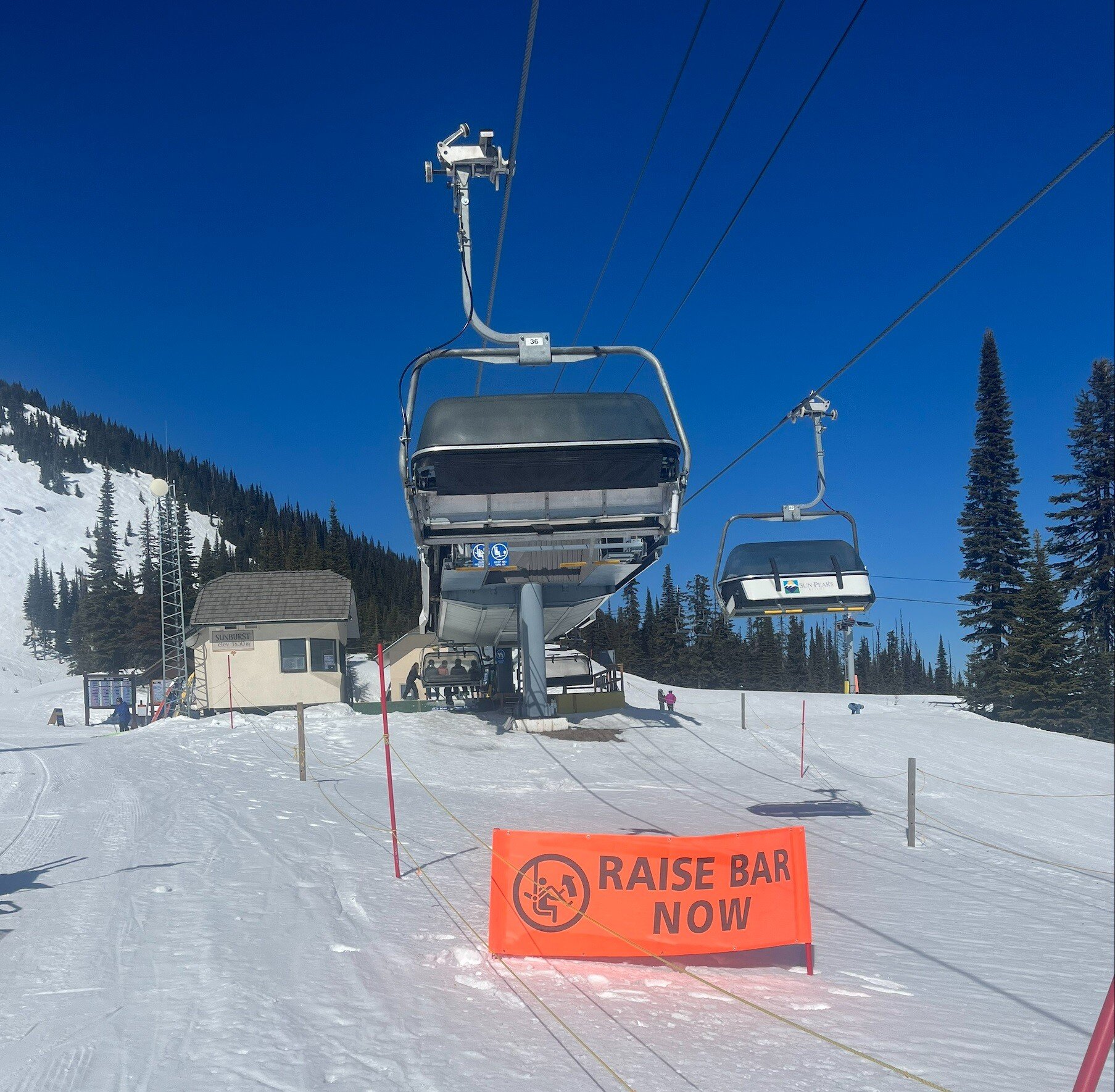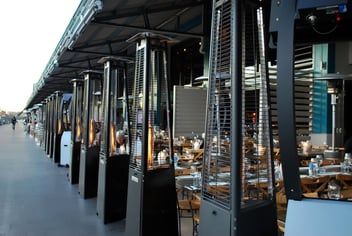Developing a A Data-Driven Approach to Safer Skiing
During the 2020-2021 winter season, the number of incidents involving falls from carriers on local ski hills more than tripled compared to previous years. Using a behavioural insights approach, we formed an industry working group and conducted exploratory research, collected baseline data, tested regulatory signage in the field, and iterated based on early learnings.
The Impact of Salient Signage on Safety
In the 2023-2024 season, we partnered with Sun Peaks Resort to test whether salient signage would improve restraining bar usage. The signage was eye-catching and highly visible, bringing attention to the desired behaviour (raising the restraining bar at the right time). A pre-post research design measured restraining bar behaviour before and after the sign was installed. Data was collected through paper forms distributed to chairlift operators in March 2024, and data entry and analysis was conducted by Technical Safety BC. As a result of the salient signage, proper restraining bar usage jumped significantly, from 20% without the sign, up to 65% with the sign. Subsequently, exposure to the risk of falling from an unsafe height was reduced by 85%.
This experience taught us:
- Behaviourally-informed interventions can generate actionable insights in real-world scenarios and,
- Piloting & iteration enable us to test and improve risk mitigation solutions, which can also reduce costs to clients and the safety system in the long-term

What Now?
While we won’t mandate that ski hills use this specific sign, we have demonstrated that behaviourally-informed research works, and we want to encourage operators to test solutions that are unique to their context.
We are also socializing the results with industry to help inform their operational decision-making. We recently presented at the Canada West Ski Areas Association Fall Meeting, which was met with great support and interest from industry.




